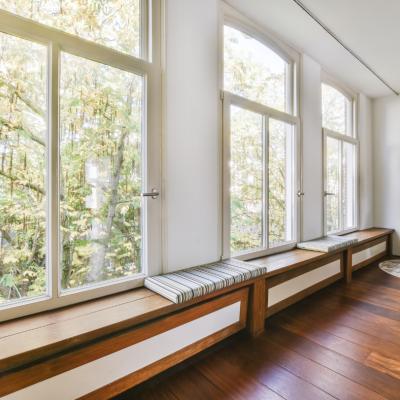Proper Ventilation in Bathroom Remodels

An essential component of any bathroom renovation, proper ventilation is sometimes disregarded in favor of enhancements that are easier to see, including fixtures, tiles, and lighting. It is impossible to exaggerate the significance of having enough ventilation, though. Maintaining a healthy atmosphere, stopping the formation of mold and mildew, and extending the life of your bathroom's finishes and materials all depend on having a well-ventilated bathroom. This post will discuss the benefits of adequate ventilation, the dangers of insufficient ventilation, and how to make sure the bathroom you just renovated is well vented.
Recognizing Ventilation's Function
The main purpose of ventilation in a bathroom is to eliminate surplus moisture from the atmosphere. Because bathrooms are used for bathing, showering, and washing, they are naturally damp spaces. This moisture has nowhere to go without adequate ventilation, creating damp conditions that are perfect for the growth of mildew and mold. Not only can mold be unattractive, but it may also be extremely dangerous to one's health, especially for those who have compromised immune systems, allergies, or asthma. Even while mildew is less dangerous, it can nonetheless erode surfaces over time and produce offensive odors.
Ventilation not only helps remove moisture but also eliminates odors and enhances the general quality of the air. A poorly ventilated bathroom can easily become stuffy and unpleasant, which reduces its comfort level. Moreover, the build-up of moisture can deteriorate drywall, paint, and other materials, necessitating expensive future repairs. You are making an investment in your home's long-term comfort and health when you give ventilation top priority throughout your bathroom renovation.
Dangers of Inadequate Airflow
Inadequate ventilation in a bathroom can have serious repercussions. The development of mold and mildew is one of the most frequent issues brought on by inadequate ventilation. Once these fungi take hold, they can be challenging to get rid of since they like moist, poorly ventilated areas. Almost any surface, including tiles, walls, ceilings, and even the grout lines, is susceptible to the growth of mold. It can spread quickly if left unchecked, causing structural damage and health issues.
Mold spores have the potential to cause allergic reactions and respiratory problems, which makes them more hazardous for people who already have health difficulties. Prolonged exposure to mold can, in extreme circumstances, cause serious health concerns such as persistent respiratory problems. Although mildew is not as dangerous as mold, it can nevertheless leave your newly renovated bathroom looking bad by discoloring surfaces and producing offensive scents.
The possible harm to the materials and finishes in your bathroom is another danger associated with inadequate ventilation. Paint might flake, wood can distort, and metal fixtures can corrode as a result of excessive moisture. This may eventually necessitate expensive repairs or perhaps a whole renovation. You can prolong the life of your bathroom and safeguard your investment by making sure it has enough ventilation.
How to Make Sure There's Enough Air
There are a few important factors to take into account when remodeling your bathroom to ensure adequate ventilation. Using an exhaust fan for ventilation is the most popular approach. In order to minimize humidity buildup, an exhaust fan extracts moisture-laden air from the bathroom and sends it outdoors. It's crucial to pick an exhaust fan that fits your bathroom properly in terms of size. The ability of fans to move air is measured in cubic feet per minute (CFM), and is used to rate them. An inefficient fan will be too small, whereas an excessively large fan could make unnecessary noise and use more energy.
Apart from dimensions, the positioning of the exhaust fan holds significant importance. Since the shower or bathtub generate the majority of the moisture, it is ideal to place the fan there. Instead of venting into the attic or crawl space, which could cause moisture issues there, it should be vented to the outside of the house.
Natural airflow in bathrooms with windows is also advantageous. When taking a shower, opening a window can aid in removing moisture from the air rapidly. But it's not a good idea to rely just on windows for ventilation, especially in colder climates where windows might be closed for a large portion of the year.
An exhaust fan with humidity sensors is an additional choice to think about. Even if you forget to switch on the fan, these fans will still kick on automatically when they sense a rise in humidity in your bathroom. This is particularly helpful in multi-person families when there is regular daily usage of the restroom.
An essential part of any bathroom renovation is adequate ventilation. A well-ventilated bathroom helps to avoid the spread of mold and mildew, preserves the finishes in your bathroom, and guarantees a comfortable and healthy atmosphere for you and your family by eliminating excess moisture and enhancing air quality. Prioritizing ventilation will pay off in the long run, whether you're installing an exhaust fan, using natural ventilation, or thinking about cutting-edge choices like humidity-sensing fans. Recall that while having a gorgeous bathroom is nice, having a functional bathroom is much more vital.


